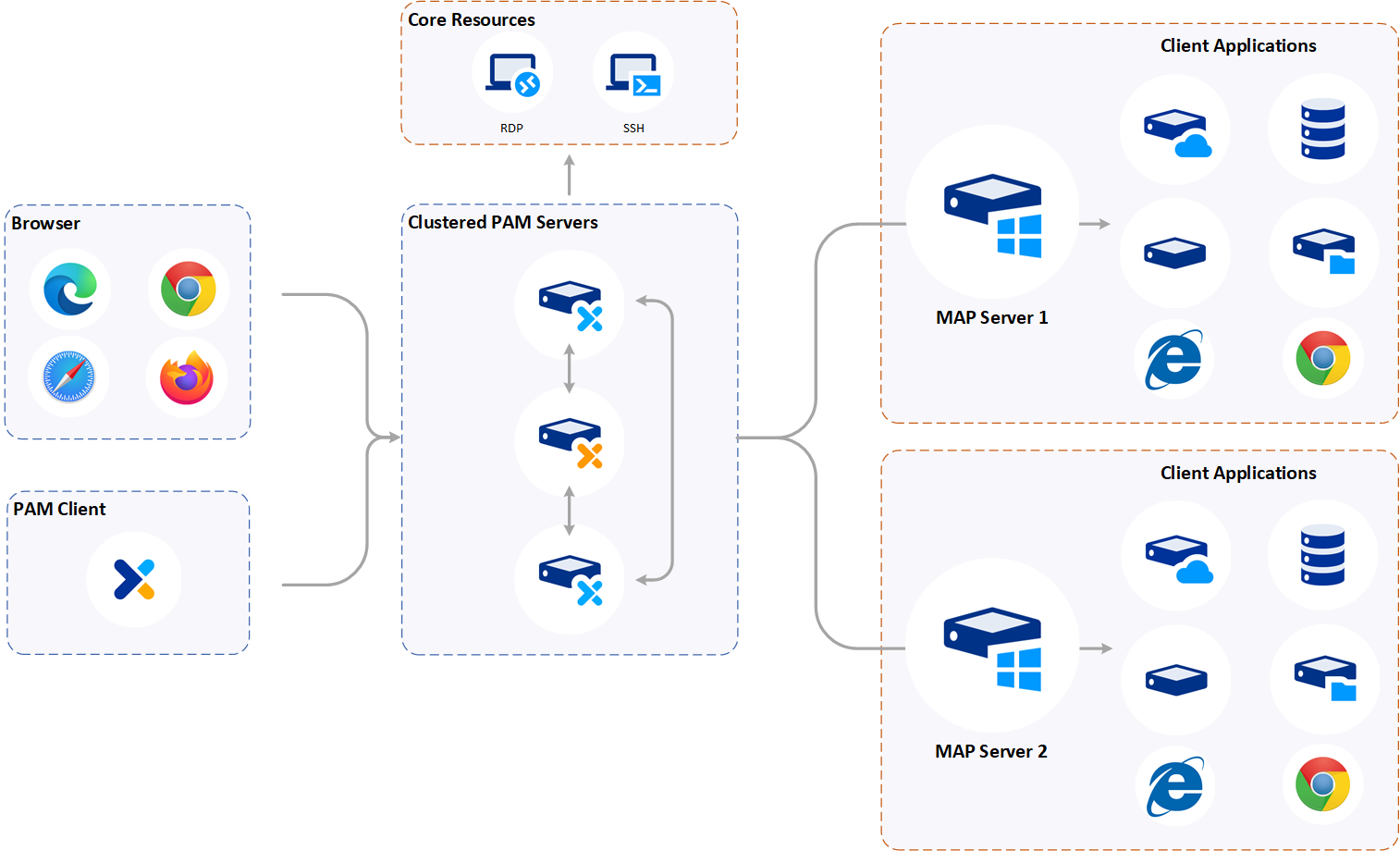Getting started with Osirium PAM
This section covers:
Document Audience
This document provides an overview of the Osirium PAM components, the steps required to install and upgrade each of the components and additional details on creating a clustered environment.
Overview
Osirium PAM is a privileged user management system that allows you to implement a least-privilege user model when granting user access to devices and device tasks across your infrastructure.
Osirium PAM ensures users never need to know the password of privileged account credentials of devices, enabling secure access and eliminating the risk posed through shared privileged account credentials.
It also provides a comprehensive audit trail, including session recording, allowing you to review and analyse end-to-end accountability of your users access and knowing who did what, when and where. Along with our behaviour analytics reporting feature, user access can be adjusted and improved, ensuring a least-privilege model can be easily implemented.
Components
| Component Name | Description |
|---|---|
| PAM Server | Main component which drives Osirium PAM. It incorporates the virtual appliance, database, Admin Interface and user interfaces (UI). Admin Interface: User Interface: |
| MAP Server Optional |
MAP Servers are an extension of the PAM Server and are used to manage connections to centrally hosted thick management applications and web based applications. |
| PAM UI Server Optional |
PAM UI Server is a dedicated webserver used to connect to Osirium PAM using a browser. NOTE: From PAM Server v7.2.0 onwards this has been integrated and is installed and configured as part of the PAM Server installation, eliminating the need for a separate PAM UI Server. However, depending on your deployment model, there may be instances where a separate PAM UI Server is required. |
